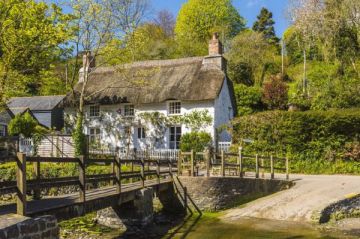Part 5 of 5
See Part 1 | Part 2 | Part 3| Part 4
By the time his divorce from Diana was granted in August 1996, the Prince of Wales’s popularity in newspaper polls had reached an all-time low. The tabloid media’s obsession with the failing marriage and the almost daily dissection of painfully private details saw him cast in the public mind as a cold and heartless philanderer who cared little for his wife or children.
In the wake of the marital fall-out, Prince Charles’s suitability to assume the Throne was commonly questioned, with surveys declaring that fewer than fifty per cent of the British population now thought him fit to become King. Such was the intense opposition to Charles that, in some polls, public opinion stated resoundingly that the Royal Family should skip a generation, allowing Prince William to ascend to the Throne over his father.
The tragic and untimely death of Diana, Princess of Wales just one year later did little to abate such feelings. Though compassion for Princes William and Harry was overflowing at the loss of their mother, a determined core maintained that if Charles had really loved Diana – by now dubbed “the People’s Princess” – she would not, on the night of August 30, 1997, have been racing through the streets of Paris, and would still be alive today. A cruel twist of fate saw, in such sorrowful circumstances for the Royal Family, yet more hostility levelled at the Heir to the Throne.
More than two and half years on, however, the situation is much different. The need for change within the Royal Family was illustrated starkly in the weeks that followed Diana’s death. While this may have been a particularly low point in Charles’s popularity ratings, his willingness to adapt to the demands made of a “modern Monarchy” has since seen him grow once more in the public’s estimation.
With the passing of time, too, has come a softening of attitudes towards Charles’s relationship with his long-time companion, Camilla Parker Bowles. Once reviled in the tabloid press as the woman who instigated the breakdown of a fairytale marriage – and similarly charged by Diana herself – Camilla’s role in the Prince’s life, though still met with strong opposition among many Court insiders, is now more widely accepted than ever before.
Since Diana’s death in 1997, the couple, who reignited their relationship in 1986, when both were still married, have been careful to avoid courting media attention. Sensitive to the memory of his late ex-wife, and to the almost religious devotion of the British public in the months following Diana’s death, both Charles and Camilla were at great pains to avoid being photographed together. The press, however, continued to make much of their association, exaggerating such details as the exact times at which the couple arrived at and left various social events, albeit separately.
In January 1999, the moment arrived for which the press had been waiting. In a carefully orchestrated move, Charles and Camilla – the woman for whom the Prince has said his love is “non-negotiable” – appeared together in public for the first time outside London’s Ritz Hotel. Some 200 photographers and journalists were there to witness the occasion. Here, at last, was a clear and comfortable expression that the two were very much a couple.
Since then, however, such photo opportunities have proved rare. Although the couple have been pictured in the same location, efforts have been made by both to avoid the level of coverage that so disturbed Diana towards the end. When seen together in public, Charles and Camilla sit or walk separately, and they do not talk to each other. For two people who are obviously in love, who share all aspects of their everyday lives, such measures must seem ridiculously contrived. But as Charles has been aware all his life, he is no ordinary man, and this is no ordinary relationship. The expectations of him are many, and he is duty-bound to both live and work within these confines.
Camilla Parker Bowles is, of course, by now a more prominent figure in the lives of Prince Charles’s children. She and Prince William first met in July 1998 during a chance encounter at St James’s Palace. Guests report that the event was amicable, and a number of lunch engagements followed. Camilla and her children, Tom and Laura, also joined the Princes on holiday in the Mediterranean last summer, and The Royal Report understands that a strong friendship has since developed between Prince William and Camilla’s son.
The relationship still poses many problems, however. The Queen, who is known to have deep misgivings about her son’s involvement with Mrs Parker Bowles, has yet to meet her publicly. Though ostensibly accepted by his sons, the rest of Prince Charles’s family are clearly not as accommodating. Camilla was not, for example, invited to Charles’s fiftieth birthday party at Buckingham Palace in 1998, which was hosted by the Queen. Neither has she been included on the guest list for this June’s joint birthday party for the Queen Mother, Princess Margaret, Princess Anne and Prince Andrew, an arrangement about which Prince Charles is said to be “resigned and disappointed”.
It also remains a contentious issue with the Church of England, although there too, there is some evidence to suggest that attitudes are shifting. As the Prince’s divorce was finalised in 1996, a survey of every level of the Anglican faith – bishops, clergy and laity – suggested that Charles would be considered unacceptable as the Supreme Governor of the Church of England if he remarried.
A year later, just weeks before Diana’s death, the Archbishop of Canterbury, Dr George Carey, warned that the Church of England would be thrown into crisis if the Prince sought to remarry. Although he could not be prevented legally or constitutionally from taking his place as Supreme Governor, the Prince of Wales’s marital status would put the Church in a difficult position and most likely require some compromise on the belief that marriage is a lifelong union.
More recently, however, a number of senior bishops have spoken out in support of Charles and Camilla’s relationship. The Bishop of Southwark, the Right Reverend Tom Butler, has urged the Prince to continue his relationship, saying that his future role as head of the Church is purely constitutional and has “nothing to do with his or her life”. Similarly, the Bishop of Durham, the Right Reverend Michael Turnbull, has said that Charles’s position would be unaffected if he were to remarry, qualifying his position by further saying that marriage to Camilla would be more desirable morally than their current state of flux.
Though Charles has on several occasions expressed that at present he and Camilla have no intention to marry, it is a matter which continues to occupy religious and constitutional debate, as is the issue as to whether or not Camilla should become Queen. Although attitudes may be softening towards the couple’s relationship, this is a matter that continues to meet with fierce resistance.
In a survey carried out to coincide with the Prince’s fiftieth birthday in 1998, 72 per cent of those polled said that if Charles and Camilla married, she should not have any official position. Certainly Camilla shows no desire to assume the role of Queen. She is well aware that the compromises required to do so have already proved to be detrimental in one relationship.
This is undoubtedly a difficult situation for Prince Charles, and one that most likely plays on his mind as he contemplates his future. More immediate, however, is the question of when, and not how, he will become King. At the age of 51, there is still no sign of the Queen relinquishing the Throne in favour of her heir. Indeed, the Palace has on several occasions expressed the view that abdication is not possible – that the Queen considers her Coronation oath to rule for life as sacrosanct – and so Prince Charles must continue to live his life in waiting. But with his mother still fit and healthy at 72, it would not be abnormal for the Prince to consider that he may not be in a position to fulfil his constitutional right for a long time to come.
In 1998, a television documentary claimed that the Prince would be secretly delighted if his mother were to abdicate. In an angry statement released by both St James’s and Buckingham Palace, Charles vehemently refuted the claims, dismissing them as ludicrous and hurtful not only to himself, but to his Family. Given the strength of the statement, it is only natural to assume that the documentary had touched on a raw nerve.
Though Prince Charles respects his mother’s position and publicly shows no desire to undermine her role, he has not declined the opportunity to talk about his future as King. He is known to favour a more informal approach than that hitherto shown, which appears in keeping with his desire to fulfil the demands of a modern Monarchy, and has suggested that he may move the Royal Court from Buckingham Palace to Windsor Castle.
He has also expressed that he wishes his Coronation to be a multi-faith ceremony and that he himself wants to be considered the defender of faith, rather than defender of the faith. (The implication is that he believes that the Monarch should represent all the diverse religions now practised in the United Kingdom.) The Prince also said recently that upon his accession, he will take the name of George, as Charles as too many negative connotations, given the reputation of some of his predecessors.
Although the finer details of Prince Charles’s intended sovereignty are yet to be established, one aspect is clear: he must, by convention, disassociate himself from political entanglements. Too often he has become embroiled in political affairs that have brought him into conflict with the Government – his strong opposition to genetically modified foods is just one example. As King, he must by the nineteenth-century definition uphold his right to be consulted, to encourage and to warn. Beyond that, the Prime Minister must determine his public role. How well Charles will be able to accommodate this constitutionally imposed silence remains to be seen.
More than any other Royal, Charles is keenly aware of the need for the Monarchy to reform if it is to survive long into the twenty-first century. For many years now it has been plagued by calls for its disestablishment, seen as it is by an increasing number of people as an expensive luxury that affords no real or justifiable return. Signs that the so-called stuffiness, which so characterised the Royal Family until recent years, is slipping away are becoming more evident – the public show of informality between Charles and his sons on a recent skiing trip, for example.
Real reform, however, can perhaps only be achieved when the sovereignty passes from one generation to the next. For now, Prince Charles will have to content himself with waiting for his birthright to be realised – a skill in which he has become well versed over the last half-century.
This is Part 5 of a 5 part profile
Part 1
Part 2
Part 3
Part 4

Contents copyright 1999-2001 The Royal Report
NOTE: The Royal Report is sadly no longer online.


